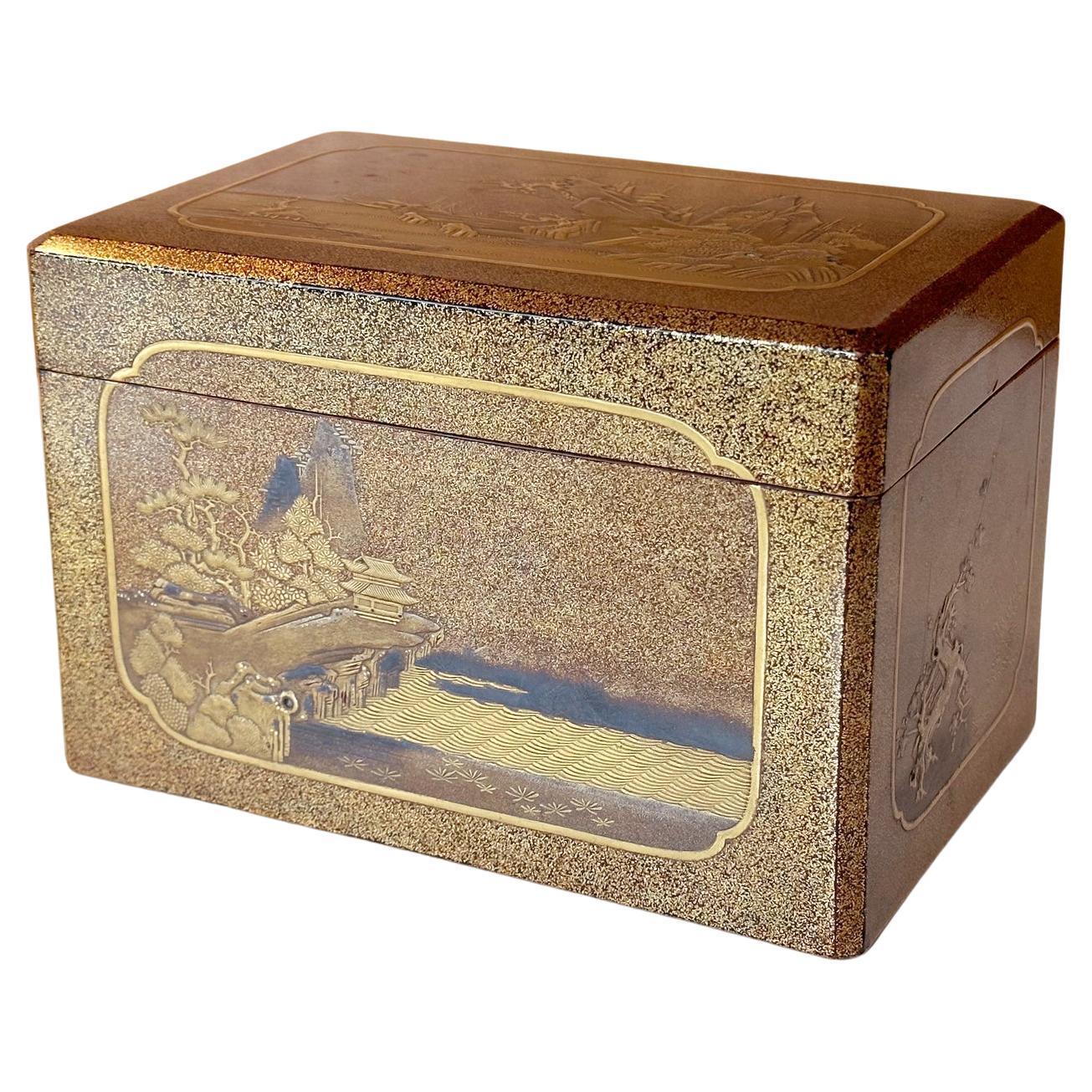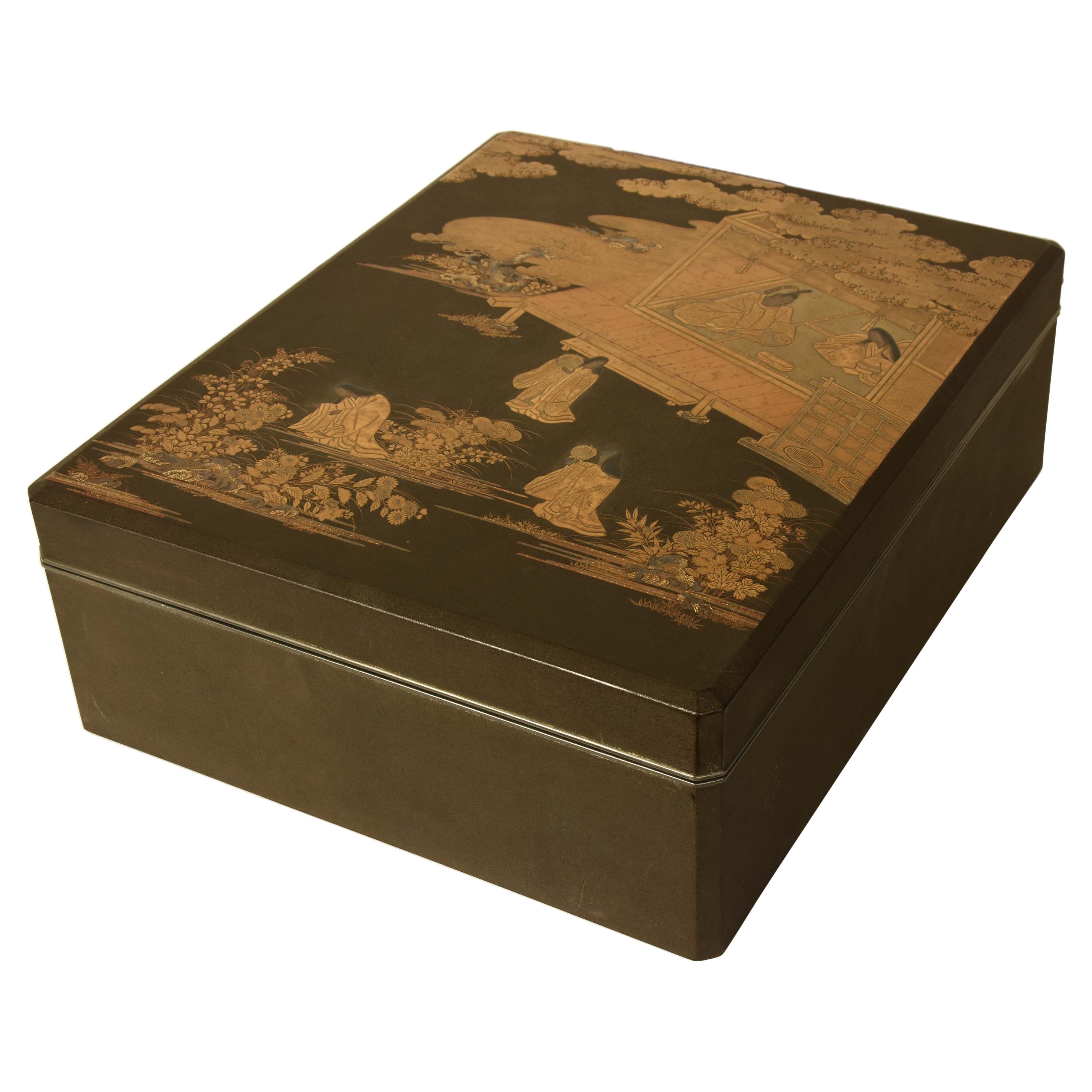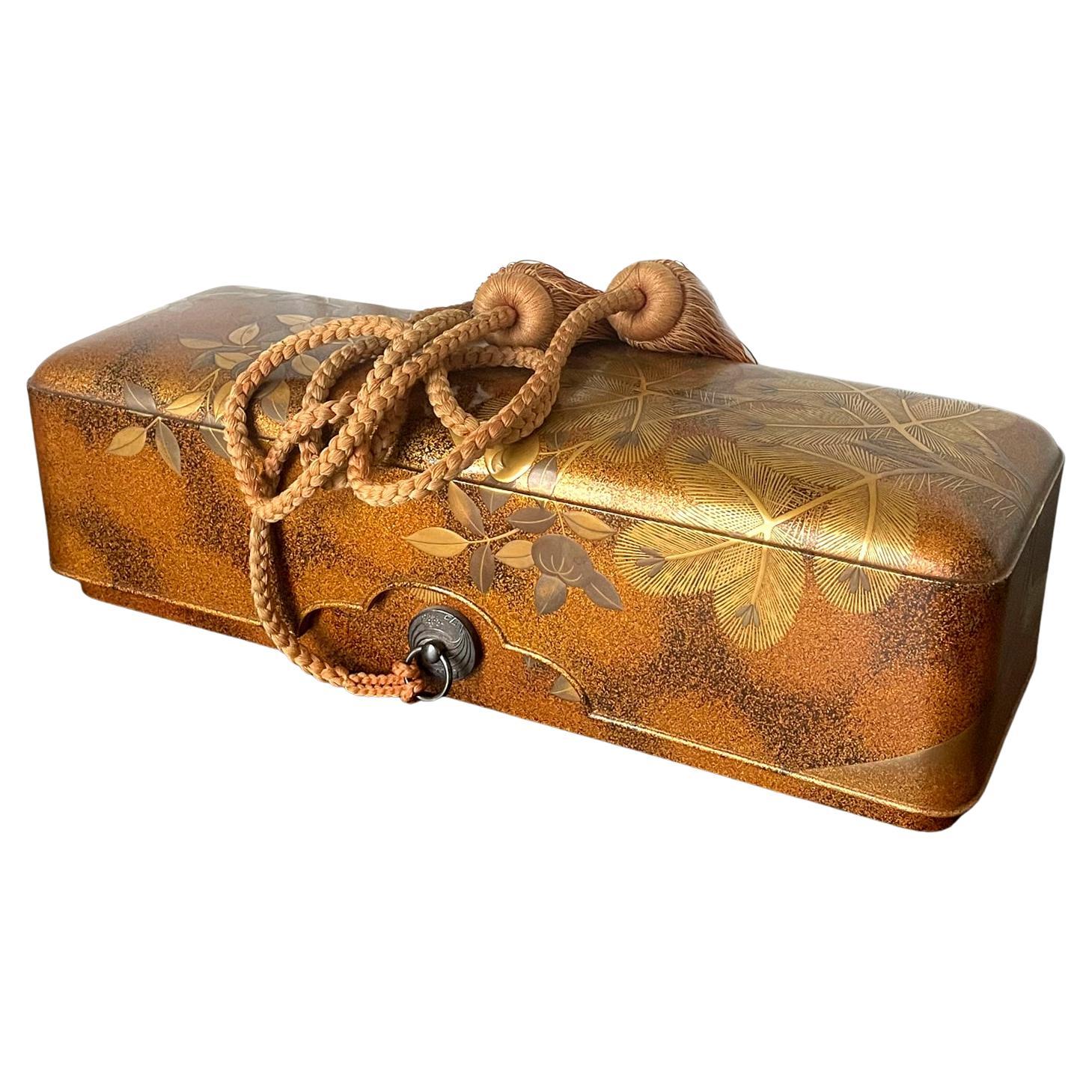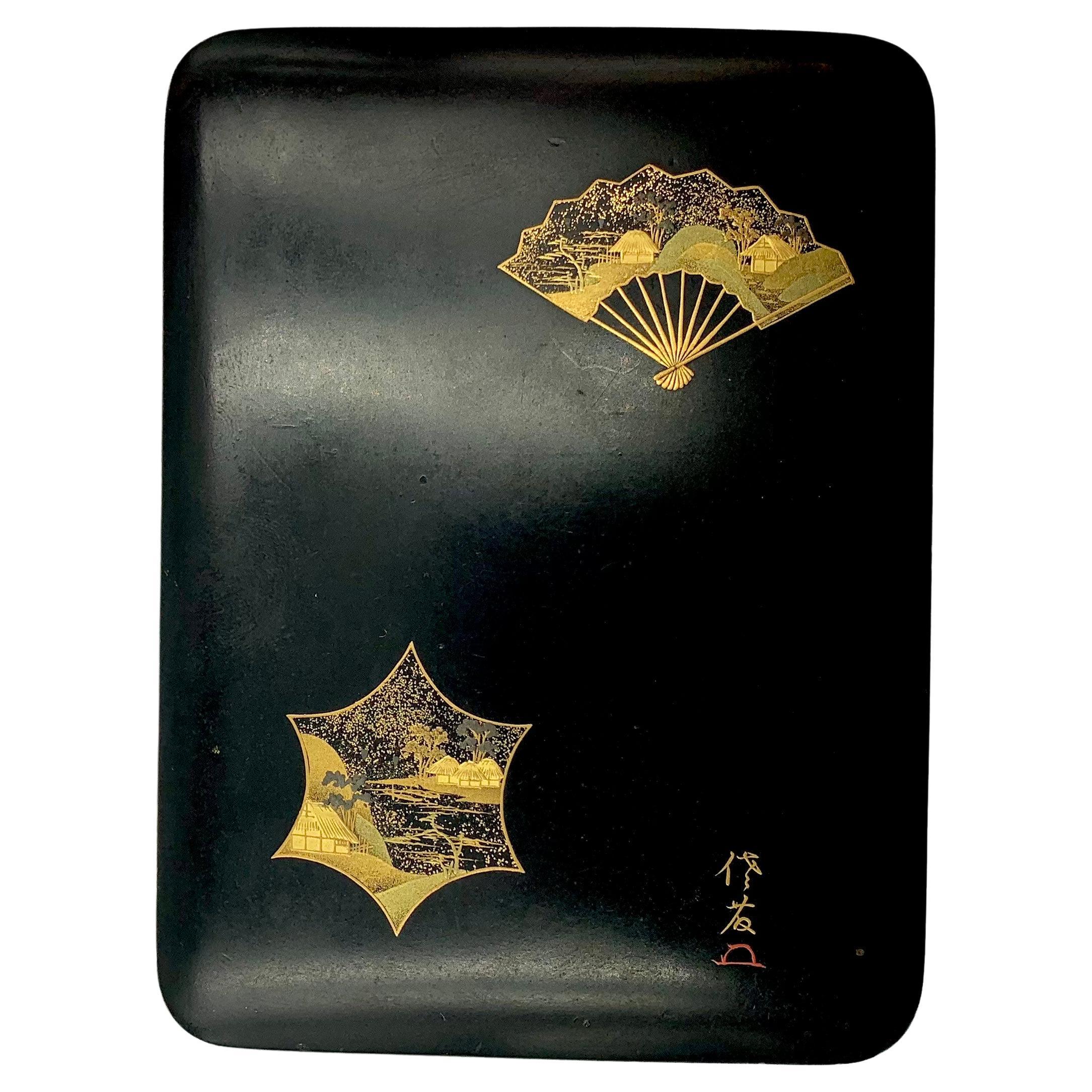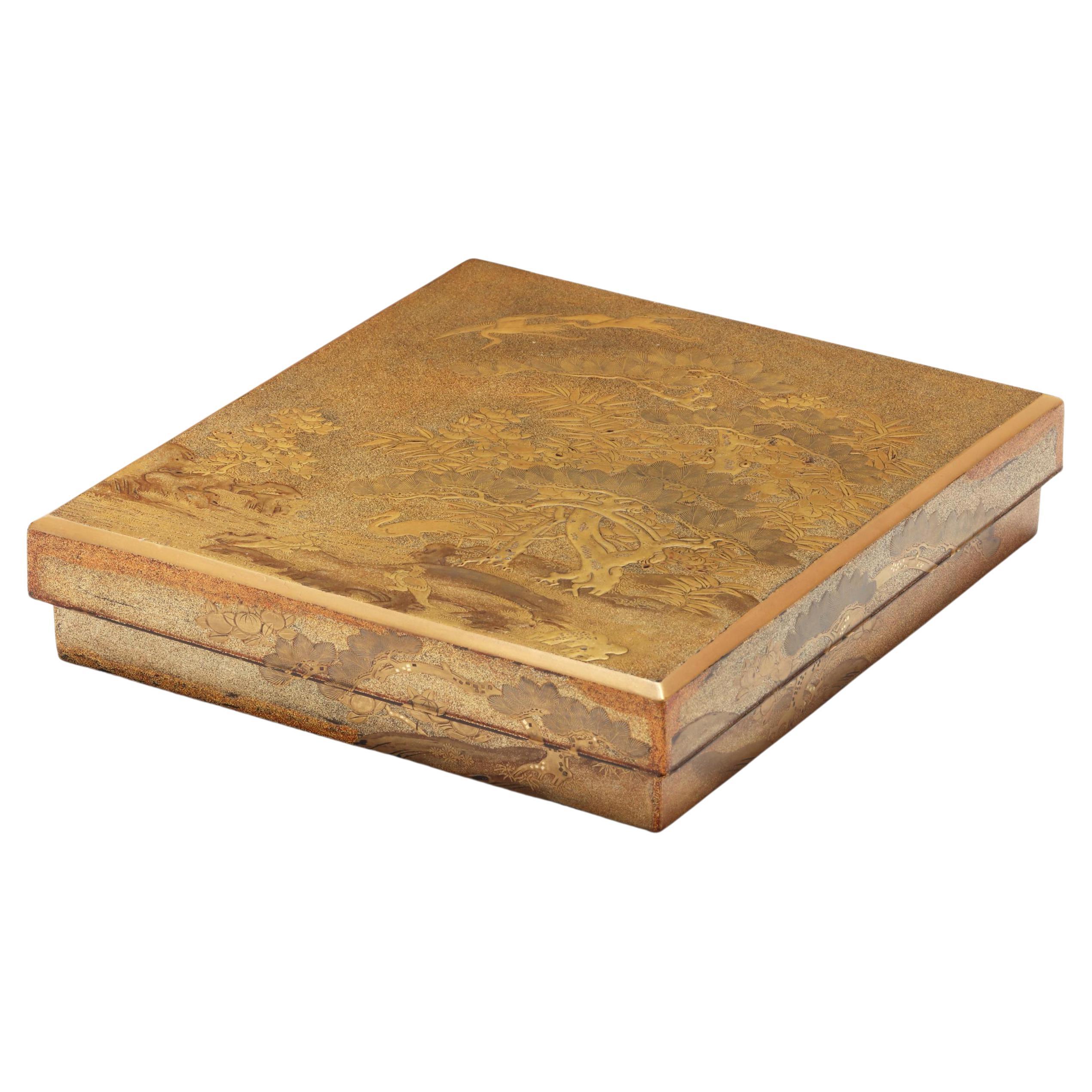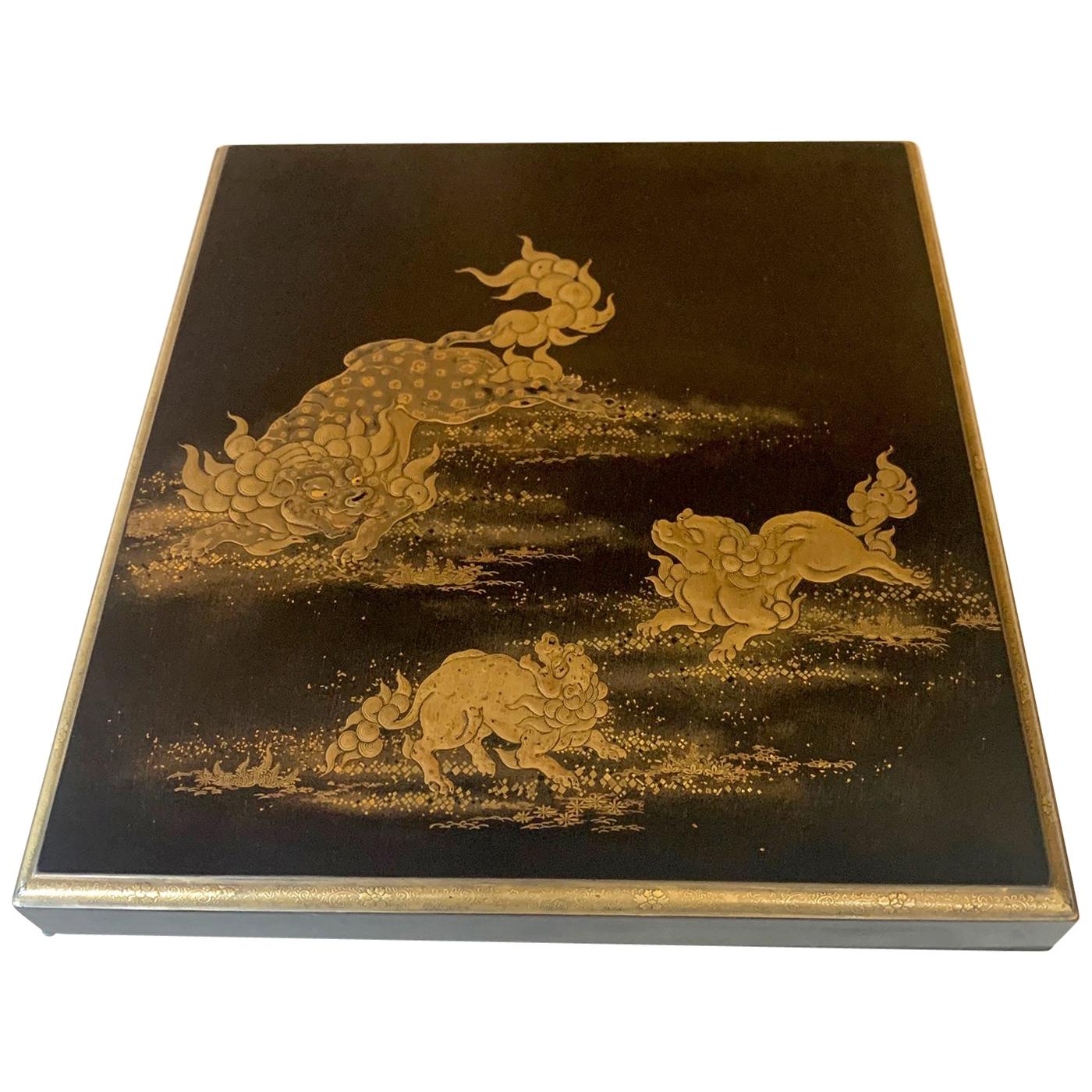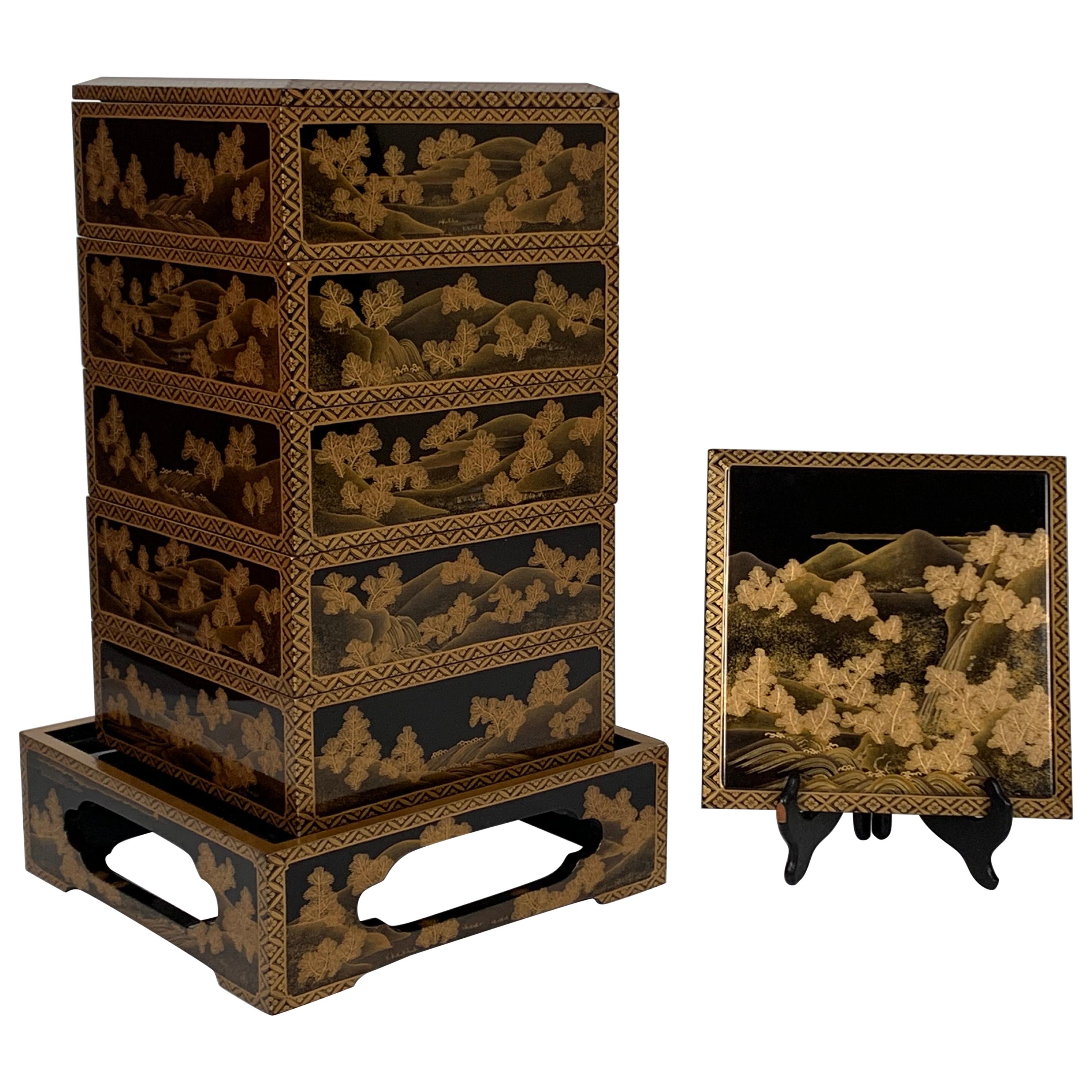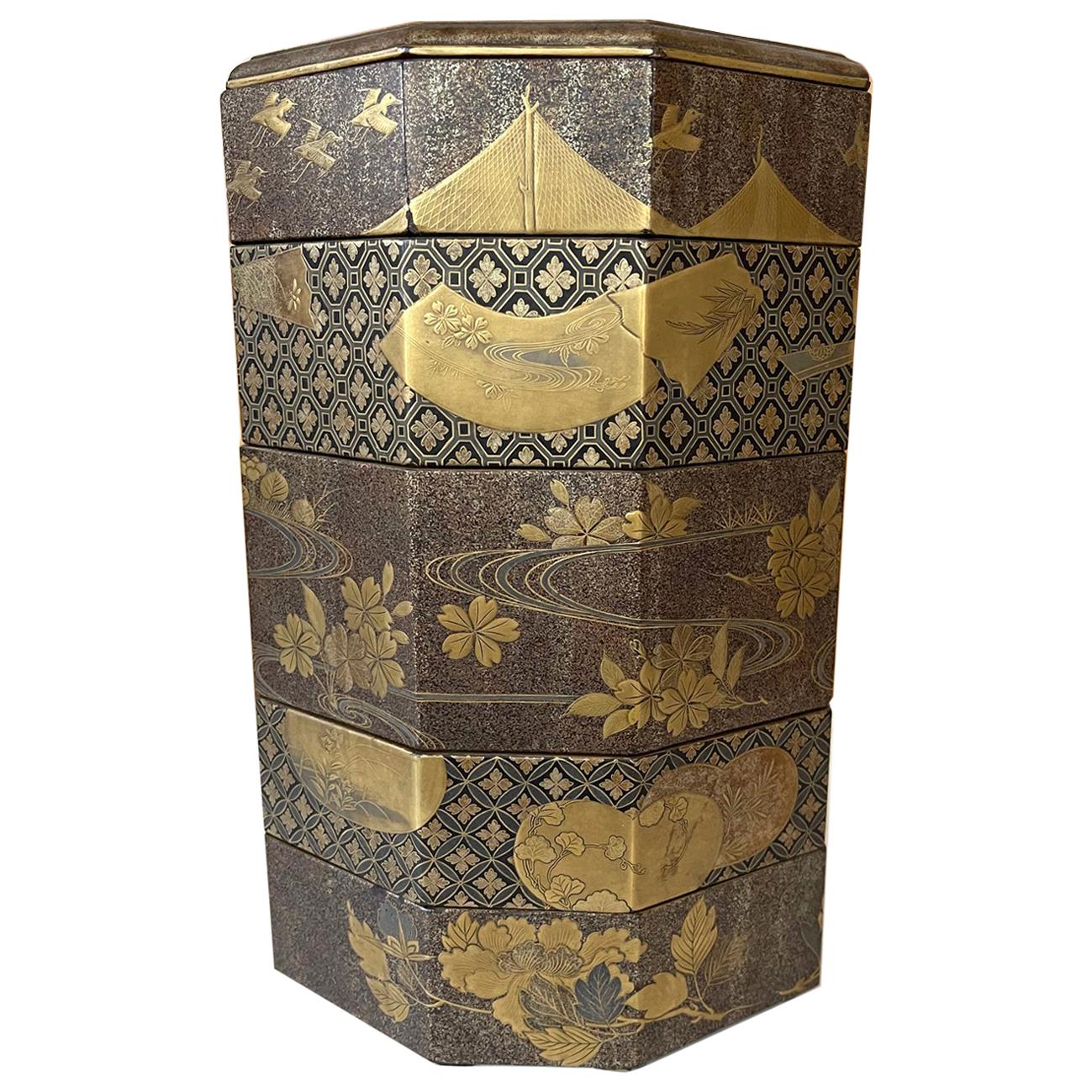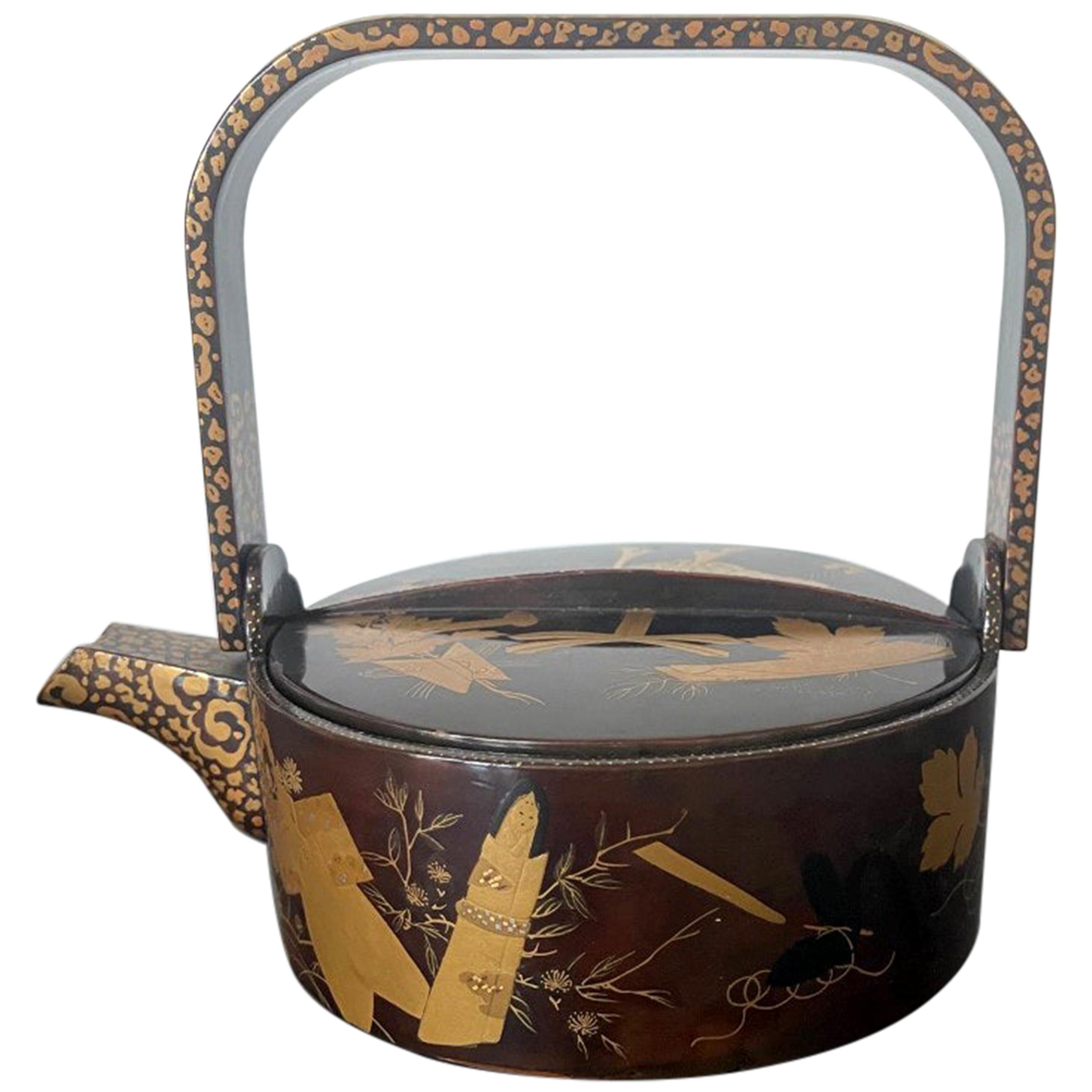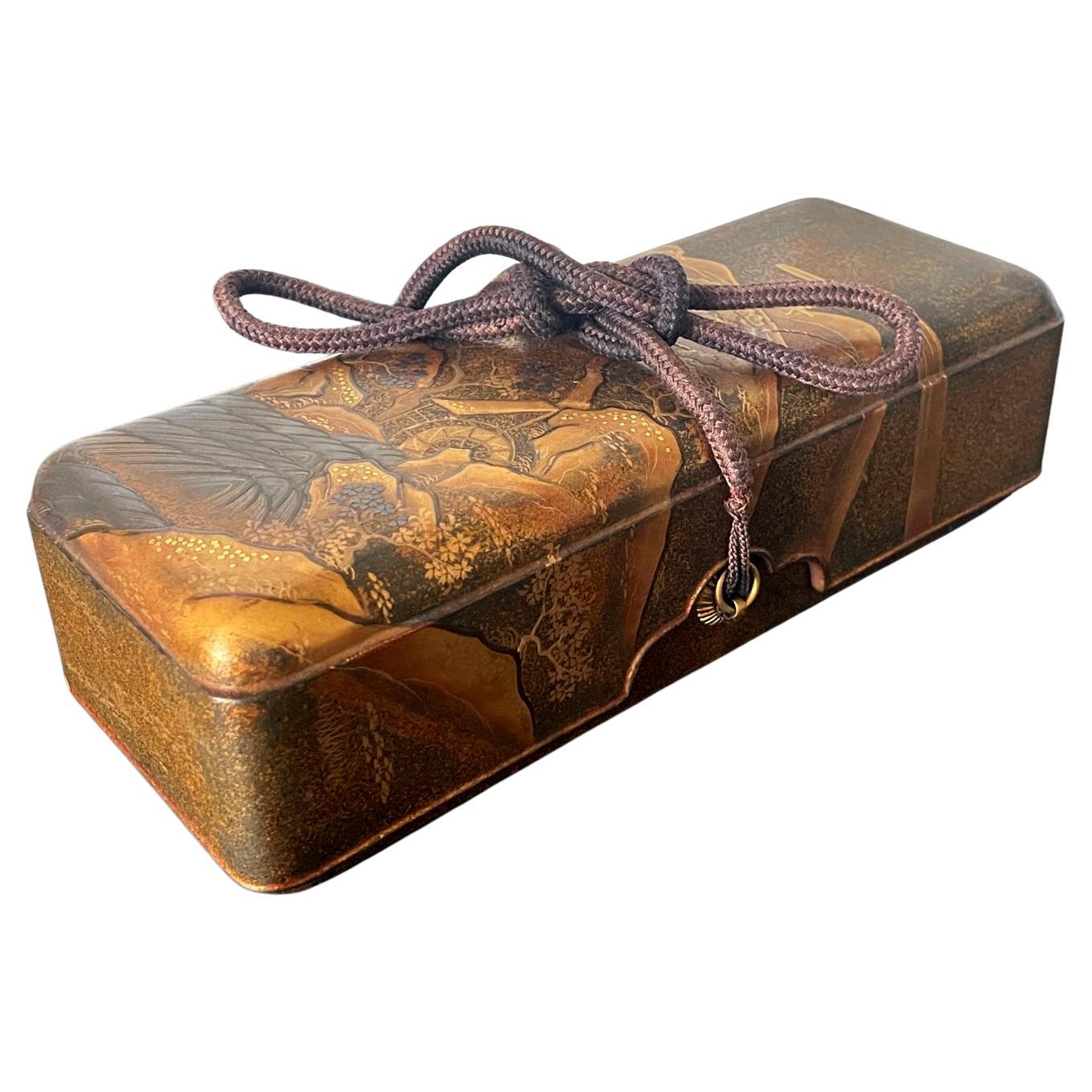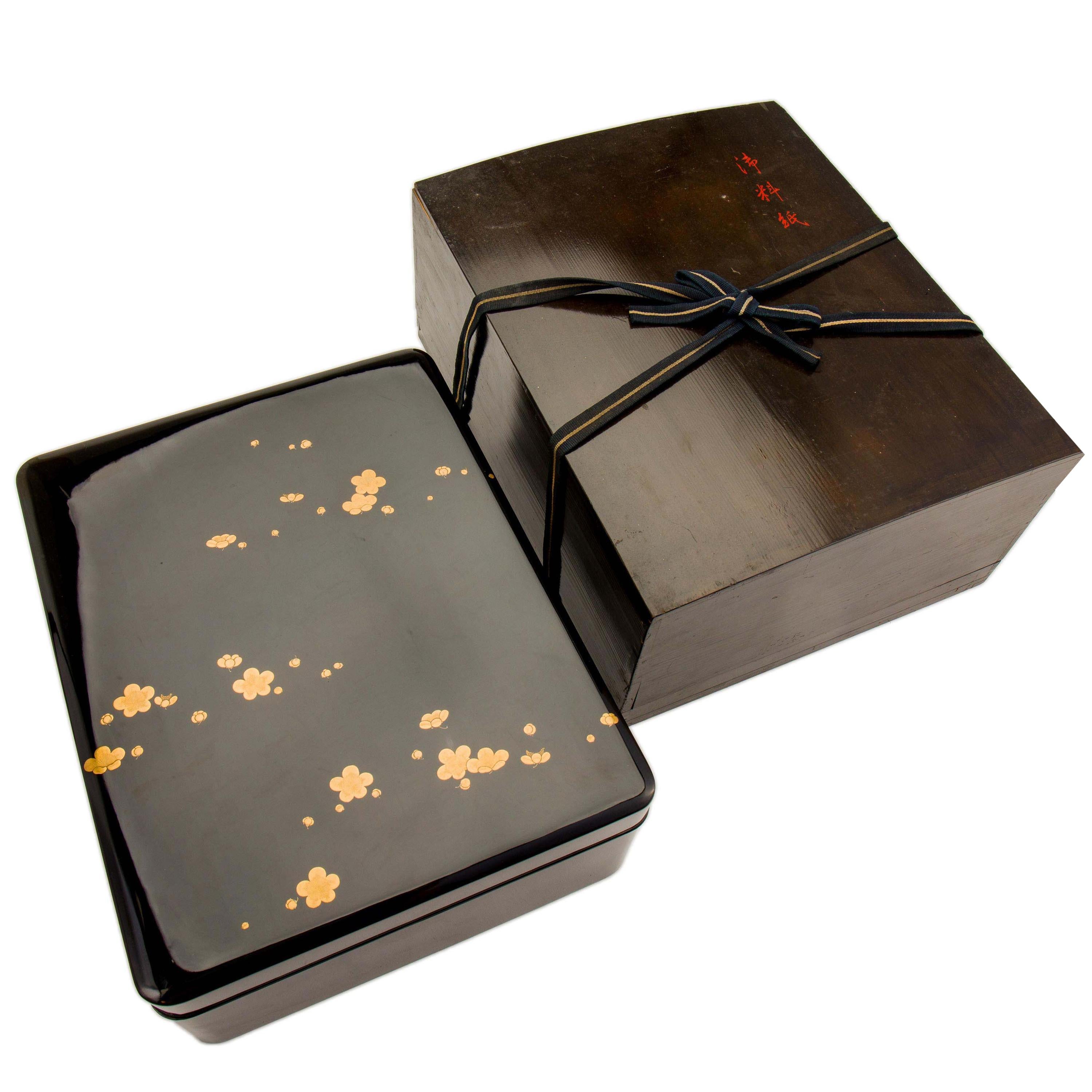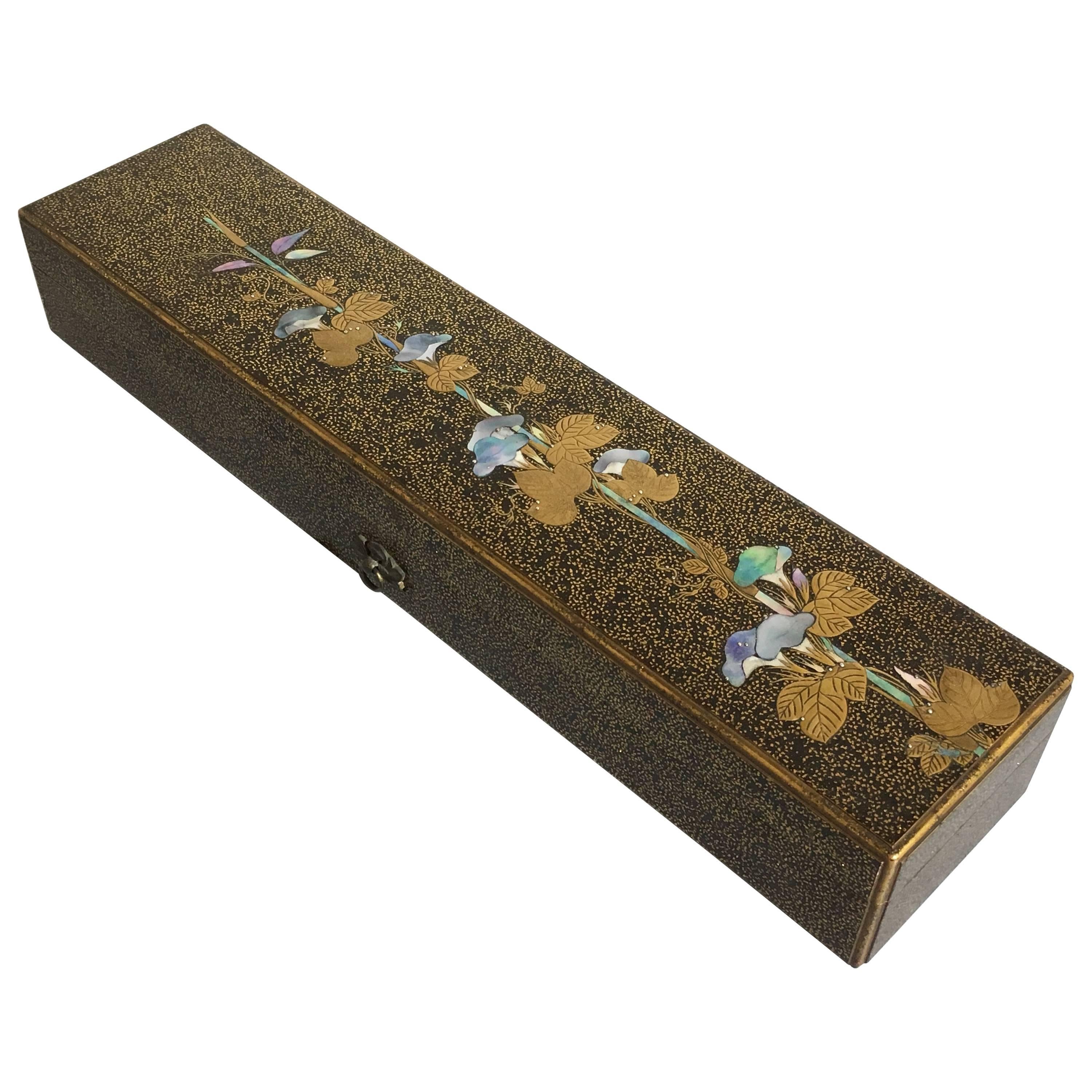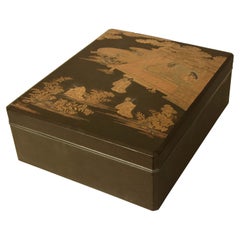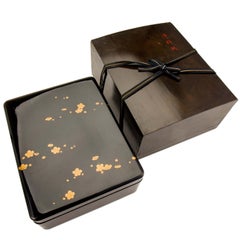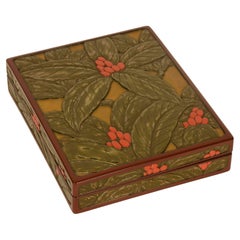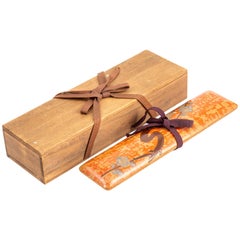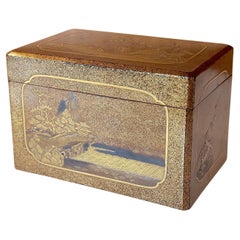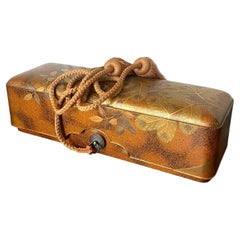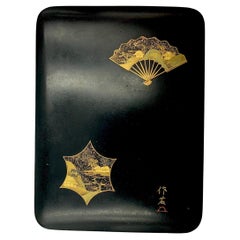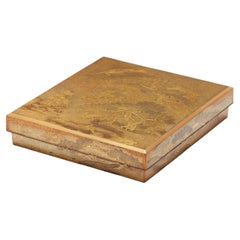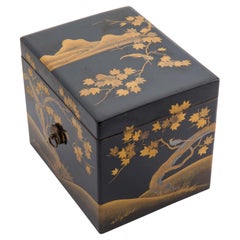
Antique Japanese Black Lacquer Noh Mask Box with Gold Maki e Design, Edo Period
View Similar Items
Want more images or videos?
Request additional images or videos from the seller
1 of 10
Antique Japanese Black Lacquer Noh Mask Box with Gold Maki e Design, Edo Period
$2,500List Price
About the Item
- Dimensions:Height: 9.85 in (25 cm)Width: 11.82 in (30 cm)Depth: 9.45 in (24 cm)
- Materials and Techniques:
- Place of Origin:
- Period:
- Date of Manufacture:1850
- Condition:Wear consistent with age and use.
- Seller Location:Prahran, AU
- Reference Number:Seller: L210011stDibs: LU1256224020232
About the Seller
5.0
Vetted Professional Seller
Every seller passes strict standards for authenticity and reliability
Established in 1979
1stDibs seller since 2015
81 sales on 1stDibs
Authenticity Guarantee
In the unlikely event there’s an issue with an item’s authenticity, contact us within 1 year for a full refund. DetailsMoney-Back Guarantee
If your item is not as described, is damaged in transit, or does not arrive, contact us within 7 days for a full refund. Details24-Hour Cancellation
You have a 24-hour grace period in which to reconsider your purchase, with no questions asked.Vetted Professional Sellers
Our world-class sellers must adhere to strict standards for service and quality, maintaining the integrity of our listings.Price-Match Guarantee
If you find that a seller listed the same item for a lower price elsewhere, we’ll match it.Trusted Global Delivery
Our best-in-class carrier network provides specialized shipping options worldwide, including custom delivery.More From This Seller
View AllSuperb Japanese Black Lacquer Document Box with Gold Maki e Design, Meiji Period
Located in Prahran, Victoria
An antique black lacquer document box with an exquisitely detailed, finely wrought design from The Tale of the Genji depicted in gold maki e across the lid. Internally, the box is de...
Category
Early 20th Century Japanese Lacquer
Materials
Wood, Lacquer
$5,200 Sale Price
20% Off
Japanese Black Lacquer Document Box with Gold Plum Blossom Design, Taisho Period
Located in Prahran, Victoria
A high quality, antique, Japanese black lacquer document box. It has an external design of gold maki e plum blossoms. In Japanese culture plum blossom symbolises the beginning of Spring, having its own festival, the Ume Matsuri, alongside the more famous cherry blossom festival...
Category
Vintage 1920s Japanese Lacquer
Materials
Wood, Lacquer
$2,880 Sale Price
20% Off
Intricately Carved Kamakura Lacquer Box with Botanical Design by Tamerou Ono
Located in Prahran, Victoria
A vintage Japanese Tsuzuri bako, writing box. with an unusual, deeply carved relief of Japanese sarcandra glabra, a woody herbal sub-shrub native to Asia with deep green glossy leave...
Category
Mid-20th Century Japanese Lacquer
Materials
Wood
Vintage Japanese Wakasa Lacquer Folder for Poems and Paintings
Located in Prahran, Victoria
A Japanese Wakasa lacquer folder to carry poems and paintings. It has a silver raised Togidashi maki-e design of cherry blossom, created by lay...
Category
Vintage 1960s Japanese Lacquer
Materials
Silk, Wood
Pair of Japanese Black Lacquer Ikebana Flower Troughs by Teshigahara Sofu
By Sōfu Teshigahara
Located in Prahran, Victoria
A distinctive pair of Japanese black lacquer ikebana flower troughs. The two sections, designed in harmony, allow a generous opportunity for creative arr...
Category
20th Century Japanese Lacquer
Materials
Wood
Mid-Century Japanese Lacquer Vase by Masayo Koiwa
Located in Prahran, Victoria
An exhibition quality dry lacquered ikebana flower vase by Masayo Koiwa. This highly unusual organically shaped vase has a sculptural feel, it sensual curves are hand-carved and lacq...
Category
Mid-20th Century Japanese Vases
Materials
Wood
You May Also Like
Exquisite Japanese Lacquer Maki-e Hand Box Kobako Edo Period
Located in Atlanta, GA
An early Japanese lacquer Maki-e decorated kobako (small storage box) circa 18th century (Edo period). Based on its form and size, this kobako was possibly used as a Chabako to store the accoutrements for chado (tea ceremony). The lidded box is of rectangular form with bevel design on all edge that softens the appearance. The entire surface was densely covered with a background of nashiji. Elaborate Maki-e techniques were used on each side to showcase a distinct landscape or floral design within a cartouche panel. On the surface of the lid, a mountainous landscape rises from the edge of the water. The poetic composition is akin to a traditional ink scroll...
Category
Antique 18th Century Japanese Edo Lacquer
Materials
Lacquer
Japanese Lacquer Maki-E Scroll Box Fubako by Kansonsai Edo Period
Located in Atlanta, GA
A Japanese lacquered wood fubako (a box to store document or small scroll painting) circa late 18th century of Edo period. The rectangular box features a deep lid with rounded corners and recessed mid-edge and a lower box with two bronze medallion rings and tasseled silk ties. The surface of the fubako was elaborately decorated with hiramaki-e and a low takamaki-e on a mottled Mura-nashiji background. The motifs on the lid depict branches of Japanese pine with finely rendered needles on the lower part; on the upper part, it showcases fruited persimmon branches. Two different shades of gold fundame were used to contrast the design and augmented by scattered gold kirigane to highlight some of the leaves. The design continues and cascades down to all sides of the lid as well as the walls of the box. The two bronze medallions appear original to the box and the silk ties show significant fading from the age. This Fine fubako is signed on the lower wall "Kanshosai" in Kanji with a kao mark. All the trims were finished in gold fundame and the interiors a dense nashiji in gold.
Kanshosai is the mark of the distinguished lacquer artist Lizuka Toyo I who also signed his work "Toyosai". He was active in the second half of the 18th century during Edo period, employed by Hachisuka Shigeyoshi (1738-1801), daimyo of Awa on Shikoku Island. Although most survived work bearing his marks are inros, he was also known to decorated trays and other larger objects...
Category
Antique Late 18th Century Japanese Edo Lacquer
Materials
Wood, Lacquer
Japanese Meiji Period Antique Lacquer Box with Gold Maki-e Decoration
Located in New York, NY
A fine antique Japanese Meji Period lacquer box decorated with a fan and a stylized star shaped window in the maki-e technique. The fan at the top right corner, fully opened depictin...
Category
Antique 19th Century Japanese Meiji Lacquer
Materials
Lacquer
Antique Japanese Ink Stone Maki-e Lacquer Box Suzuribako Edo Provenance
Located in Atlanta, GA
A Japanese ink stone box (known as Suzuribako) with exquisite maki-e decoration from Edo period (circa mid-18th century). The box features a rectang...
Category
Antique 18th Century Japanese Edo Lacquer
Materials
Wood, Lacquer
Japanese Lacquer Box with Fine Maki-e Decoration Meiji Period
Located in Atlanta, GA
A lacquered wood box with lid from Japan circa 19th century Meiji Period. The finely decorated box was used to store paper slips and small documents on the desk. It is overall finished with black lacquer (kuro) with sparse Mura-Nashiji effect outside and on the top surface of the lid, there are three Komainu, (sometimes known as Shishi or Japanese lions) frolicking and forming a circle in lively motion. Komainu are auspicious animals in Japanese cultures in both Shinto and Buddhism tradition. Originally from China, these animals symbolizes guardians to ward off evil spirits. Hiramaki-e was used in combination with carving and combing to render the lions with various surface textures. A gilt border with an slight angle was given to the lid and even the thin band is decorated with miniature floral scrolls. The interior of the box was finished in a dense nashiji. Underneath the lid, a cluster of peonies open lavishly by two gentle mounts. Takamaki-e (high relief) in both gold and silver were...
Category
Antique Late 19th Century Japanese Japonisme Lacquer
Materials
Wood, Lacquer
Japanese Maki-e Lacquer Stacking Box, Jubako, Meiji Period, Japan
Located in Austin, TX
A fine and impressive Japanese gold maki-e decorated black lacquer five-tier jubako with presentation tray, two lids, and the original tomobako storage box, Meiji period, late 19th c...
Category
Antique Late 19th Century Japanese Meiji Lacquer
Materials
Lacquer
Recently Viewed
View AllMore Ways To Browse
Japanese Mask Edo
Japanese Lacquer Mask
Edo Period Mask
Tray Japan
Japanese Red Lacquered
Japanese Lacquer Meiji
Japanese Black Lacquer Gold
Japanese Inlay
Japan Edo Lacquer
Lacquer Fan
Cinnabar Furniture
Mother Of Pearl Inlay Lacquer
Japanese Lacquered Plates
Black Japanese Tray
Japanese Gold Lacquer Box
Antique Japanese Tray
Antique Asian Mother Of Pearl Furniture
Japanese Wood Tray
